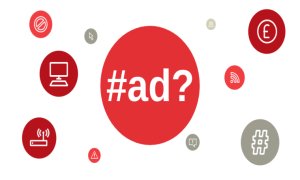
#Ad : The rise of social media influence marketing.
When was the last time you bought something from a billboard or a newspaper? Probably not recently. Instead, advertisers are now spending their money on digital market platforms. And at the pinnacle of these marketing platforms are influencers. Since millennial, generation Y, and generation Z consumers spend so much time consuming user-generated content, the creator begins to become their acquaintance and could even be categorized as a friend. Once that happens, the influencer has more power to do what their name suggests and influence the user to purchase. This is where our current e-commerce market is headed.
Imagine this:
If a person you know and trust suggests you try a brand new product, you would probably try it. Now, if that same person were to divulge to you that they were paid to tell you all about how wonderful this product is, you would probably have some questions about the reality of their love for this product, right?
Lucky for us consumers, the Federal Trade Commission (FTC) has established an Endorsement Guide so we can all have that information when we are being advertised to by our favorite social media influencers.
The times have changed, quickly.
Over the past 8 years, there has been a resounding shift in the way companies market their products, to the younger generation specifically. The unprecedented changes throughout the physical and digital marketplace have forced brands to think thoroughly through their strategies on how to reach the desired consumer. Businesses are now forced to rely on digital and social media marketing more than they ever have before.
With the rise of social media and apps like Vine, and Tik Tok, came a new metaverse with almost untapped potential for marketing. This was the way companies would be able to reach this younger generation of consumers, you know, the ones with their heads craned over a phone and their thumbs constantly scrolling. These were the people that advertisers had trouble reaching, until now.
What the heck is an “ Influencer”?
The question “What is an influencer?” has become standard in conversations among social media users. We know who they are, but the term is very loosely defined. Rachel David, a popular, YouTube personality, defined it with the least ambiguity as “Someone like you and me, except they chose to consistently post stuff online”. This definition seems harmless enough until you understand that it is much more nuanced than that and these individuals are being paid huge sums of money to push products that they most likely don’t use themselves, despite what their posts may say. The reign of celebrity-endorsed marketing is shifting to a new form of celebrity called an “Influencer”. High-profile celebrities were too far removed from the average consumer. A new category emerged with the rise of social media use, and the only difference between a celebrity and a famous influencer is…relatability. Consumers could now see themselves in the influencer and would default to trusting them and their opinion.
One of the first instances we saw influencers flexing their advertising muscle was the popular app Vine .Vine was a revolutionary app and frankly existed before its time. It introduced the user to a virtual experience that matched their dwindling attention span. Clips were no more than 6 seconds long and would repeat indefinitely until the user swiped to the next one. This short clip captured the user’s attention and provided that much-needed dopamine hit. This unique platform began rising in popularity, rivaling other apps like the powerhouse of user engagement, YouTube. Unlike YouTube, however, Vine required less work on the shorter videos, and more short videos were produced by the creator. Since the videos were so short, the consumers wanted more and more videos (content), which opened the door for other users to blast their content, creating an explosion of “Vine Famous” creators. Casual creators were now, almost overnight, amassing millions of followers, followers they can now influence. Vine failed to capitalize on its users and its inability to monetize on its success, it ultimately went under in 2016. But, what happened to all of those influencers? They made their way to alternate platforms like YouTube, Instagram, and Facebook taking with them their followers and subsequently their influencer status. These popular influencers went from being complete strangers to people the users inherently trusted because of the perceived transparency into their daily life.
Here come the #ads.

Digital marketing was not introduced by Vine, but putting a friendly influencer face behind the product has some genesis there. Consumerism changed when social media traffic increased. E-commerce rose categorically when the products were right in front of the consumer’s face, even embedded into the content they were viewing. Users were watching advertisements and didn’t even care. YouTube channels that were dedicated solely to reviewing different products and giving them a rating became an incredibly popular genre of video. Advertisers saw content becoming promotion for a product and the shift from traditional marketing strategies took off. Digital, inter-content advertising was the new way to reach this generation.
Now that influencer marketing is a mainstream form of marketing, the prevalence of the FTC Endorsement Guide has amplified. Creators are required to be transparent about their intentions in marketing a product. The FTC guide suggests ways influencers can effectively market the product they are endorsing while remaining transparent about their motivations to the user. The FTC guide provides examples of how and when to disclose the fact that a creator is sponsoring or endorsing a particular product that must be followed to avoid costly penalties. Most users prefer to have their content remain as “on brand” as possible and will resort to the most surreptitious option and choose to disguise the “#ad” within a litany of other relevant hashtags.
The age of advertising has certainly changed right in front of our eyes, literally. As long as influencers remain transparent about their involvement with the products they show in their content, consumers will inherently trust them and their opinion on the product. So sit back, relax, and enjoy your scrolling. But, always be cognizant that your friendly neighborhood influencer may have monetary motivation behind their most recent post.

